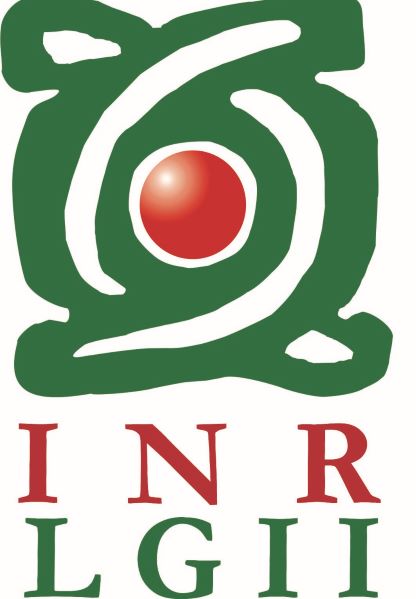
Corrections and retractions
Corrections to manuscripts
-
Rationale: Corrections are issued to rectify errors that affect the accuracy or integrity of published work. These errors may include factual inaccuracies, calculation mistakes, or typographical errors.
-
Initiation: Corrections can be initiated by the authors themselves or identified by the Editorial Office, reviewers, or readers. Authors are encouraged to promptly notify the Editorial Office of any errors detected in their published manuscripts.
-
Assessment: The Editor-in-Chief, in consultation with relevant editorial staff and experts if necessary, evaluates the nature and significance of the error to determine the appropriate course of action.
-
Correction Procedure: Once an error is confirmed, a correction notice is published promptly in the journal, clearly identifying the original article and the nature of the error. The correction notice may include a corrected version of the affected portion of the manuscript if applicable.
-
Dissemination: Corrections are prominently displayed on the journal's website and indexed to ensure visibility and accessibility to readers. Authors of the corrected manuscript are notified of the correction and provided with the updated DOI for their records and citation purposes.
Corrections to Acknowledgements section
The Acknowledgement section reflects individual and institutional support, and it must accurately represent those who contributed or supported the work in a meaningful way. To align with the recommendations of the Committee on Publication Ethics (COPE) and uphold the integrity of the scholarly record, the journal has established the following policy for correcting Acknowledgement sections before and after publication.
1. Corrections before publication
Authors may request changes to the Acknowledgement section prior to final publication under the following circumstances:
Acceptable Reasons for Correction:
-
Factual inaccuracies or misstatements.
-
Errors in the identification or affiliation of individuals or institutions.
-
Addition or removal of individuals or institutions based on changes in their contribution or support.
-
Contributions that no longer apply due to verifiable changes, such as withdrawn support, loss of institutional affiliation, or change in project scope.
Request Procedure:
-
The corresponding author must submit a written request detailing the reason for the correction.
-
In cases involving the removal of institutions, the journal may require:
-
An official explanation from the author(s).
-
In certain cases, communication or confirmation from the institution, particularly if public funding or formal agreements were involved.
-
-
Approved corrections will be made prior to final publication, without the need for a formal correction notice.
Timing:
-
Corrections must be requested no later than the proofreading stage.
2. Corrections after publication
Requests to correct the Acknowledgement section after publication will be handled with transparency and may result in the publication of a formal correction notice.
Acceptable Reasons for Correction:
-
The Acknowledgement includes factual inaccuracies.
-
Individuals or institutions were included in error or without consent.
-
Individuals or institutions request removal.
-
Contributions are misrepresented or no longer apply due to verifiable changes, such as withdrawal of support or revocation of authorization to be associated with the work.
Review and Documentation:
-
The editorial office will assess the request on a case-by-case basis.
-
When institutions are involved, the journal may:
-
Request documentation confirming the change in status.
-
Require communication from an authorized representative of the institution if the removal is requested by the authors or the institution itself.
-
Correction Mechanism:
-
If approved, a formal correction notice (erratum or corrigendum) will be published.
-
The original article will remain unchanged but will be permanently linked to the correction notice.
-
The correction notice will explain the nature and reason for the change and will be indexed and publicly accessible.
Retractions:
-
Rationale: Retractions are issued in cases of serious errors or misconduct that invalidate the integrity or reliability of published work. Such errors may include data fabrication, plagiarism, ethical violations, or undisclosed conflicts of interest.
-
Initiation: Retractions may be initiated by the authors themselves, upon discovering significant errors or misconduct in their work, or by the Editorial Office, reviewers, or readers who bring concerns to the attention of the Editor-in-Chief.
-
Investigation: Upon receiving allegations of misconduct or serious errors, the Editor-in-Chief initiates a thorough investigation, involving consultation with relevant parties, including authors, institutional authorities, and experts in the field.
-
Decision-Making: Based on the findings of the investigation, the Editor-in-Chief, in consultation with the Editorial Board and legal advisors if necessary, determines whether retraction is warranted. Retractions are considered only in cases of clear evidence of misconduct or irreparable errors that undermine the validity of the published work.
-
Retraction Notice: If retraction is deemed necessary, a retraction notice is issued, clearly stating the reasons for retraction, the nature of the errors or misconduct, and any relevant corrective actions taken. The retraction notice is published prominently in the journal and linked to the original article.
-
Dissemination: Retraction notices are disseminated widely through the journal's website, indexing databases, and relevant academic channels to ensure that readers are informed of the retracted work's status and reasons for retraction.
Ethical Considerations:
-
Confidentiality: All investigations into potential corrections or retractions are conducted with strict confidentiality to protect the privacy and reputation of all parties involved, including authors, reviewers, and whistleblowers.
-
Fair Process: Authors are provided with an opportunity to respond to allegations of errors or misconduct and to present their case during the investigation process. Decisions regarding corrections or retractions are made impartially and transparently, guided by the principles of fairness and due process.
-
Disclosure: Corrections and retractions are accompanied by clear and transparent explanations of the reasons for the action, ensuring accountability and maintaining the journal's credibility and trustworthiness.
By adhering to these policies and ethical standards, Investigación en Discapacidad upholds its commitment to promoting integrity, transparency, and accountability in scholarly publishing, thereby safeguarding the integrity of the scientific record and maintaining public trust in the journal and the research community.

